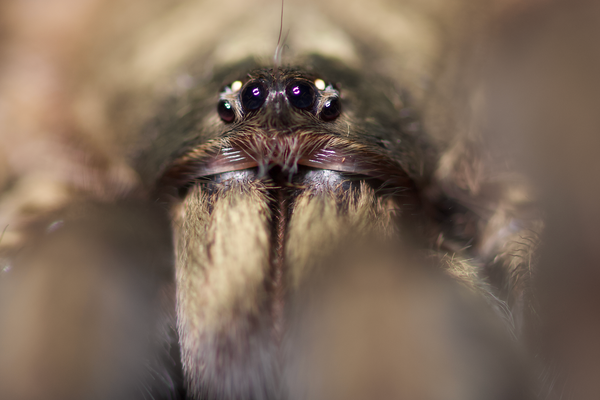To Track Bull Sharks, First Hit Their Snooze Button
For these researchers in Southern Africa, tagging the apex predators starts with putting them in trancelike tonic immobility.
Bull sharks, says marine biologist Ryan Daly, “like to bite.”
Daly and colleagues catch the famously ferocious fish off the coast of southern Mozambique and fit them with transmitters as part of a long-distance tracking project to reveal more about the animals’ habits. The team uses strong lines and circle hooks—harmless to the sharks—baited with striped bonito fish, thick rubber mats to protect the inflatable boat from sharp teeth, and something called tonic immobility: essentially, a shark’s Achilles’ heel.
“Once you can get a shark upside down, they pretty much just fall asleep,” says Daly. “It’s pretty incredible.”
It’s still unclear why sharks are prone to this state, but it may have evolved around mating behavior, with the male shark grabbing the female shark by its pectoral fin and flipping her over so that she relaxes. However, both male and female sharks experience tonic immobility—it may, says Daly, simply be that sharks are not wired to be on their backs.
“I think it just confuses them,” he says. “But it’s really helpful for us to be able to work on the sharks and tag them.”
Tonic immobility is a “weird and wonderful thing,” says Toby Rogers, a doctoral candidate and research manager with the Cape Town-based conservation NGO, Shark Spotters. He suspects it may have evolved as a way for sharks, especially smaller species, to play possum, feigning death when threatened. “It’s potentially a survival trait,” he says.

Knowing a shark’s immobility trigger is one thing, but for Daly’s team, turning the creature upside down while aboard an inflatable craft out on the ocean is another. Occasionally, the rubber mats aren’t protective enough, and the sharks bite into one of the pontoons. “It’s not ideal,” Daly says, “especially when it happens in the middle of nowhere and you need to fix it yourself.”
The pontoons of the inflatable boats used by the team do have separate chambers, so if one is ruptured, the others keep the boat, and the team, afloat. But a well-aimed shark bite “kind of deflates the team as well as the pontoon,” says Justin Blake, a marine biologist and tour guide who’s part of Daly’s tagging team. “Now you’ve got to get back, clean the boat, dry it, fix it, and it’s always a pain. It’s like fixing a tire puncture. It’s never quite the same again.”
The team’s goal is always to catch and flip the shark as quickly and smoothly as possible. “As soon as the shark goes into that catatonic state, it’s not going to harm itself, you, or the boat,” Blake says. Once the shark takes the bait and the line is hauled in, bringing the animal alongside the pontoon, a rope is hooped around the tail and two or more team members reach into the water and, holding onto one of its pectoral fins, manually roll the shark over.
Once the bull shark is napping, the team makes a tiny incision through skin and muscle, and places a transmitter around the size of an AA battery in a naturally occurring cavity in the animal. The incision is closed using stitches and the shark is flipped back onto its stomach. Off it swims with a transmitter that can last up to 10 years. The remarkable ability of sharks to heal means the stitches are pushed out within a week or two, says Daly.

While bull sharks, which are found in all of the world’s oceans, have occasionally killed or wounded humans, Daly says he personally has never felt threatened.
“I’ve spent many years diving with them and have seen them get very active, but I’ve never really felt like they wanted to eat me,” he says. The marine biologist has studied the species for 14 years, first as a focus of his Ph.D. and then, for the last eight years, as part of his work with the Durban-based Oceanographic Research Institute. The sharks, he adds, are “very cued into their prey, and what they want to eat. But without a doubt they need to be respected, and they can be dangerous.”
Part of Daly’s current research delves into the animals’ migration patterns. Previously, much of what was known about bull sharks was based on the individuals killed by swimmer protection nets along South Africa’s eastern coast, and researchers believed the animals stayed within small territories. Data from the transmitters Daly’s team implants tell a different story.
Some of the 55 bull sharks currently being monitored make seasonal round trips of 6,000 kilometers (4,000 miles), from South Africa’s Breede River, on the country’s southern coast, to northern Mozambique.
Daly’s main study site is in the richly biodiverse waters of the Ponta do Ouro Partial Marine Reserve, in southern Mozambique. Here, annual spawning events for some of the bull shark’s favorite prey occur, including the world’s largest gathering of giant trevally, which can weigh up to 80 kilograms (about 175 pounds).

When the fish gather along an offshore reef consisting of underwater pinnacles, sand patches, and coral, so do the sharks.
“The fish use the full moon and the start of the summer season to time their spawning, so you can predict very accurately when the sharks are going to arrive,” Daly says.
While bull sharks typically frequent the turbid waters of estuaries, in Ponta do Ouro, says Blake, “you have crystal-clear water … where you can find big bull sharks.” The largest shark tagged by the team in this area was more than three meters (about 10 feet) long.
Once tagged, the sharks’ movements are tracked via dozens of receivers attached to the ocean floor. These receivers are part of the Acoustic Tracking Array Platform (ATAP), which stretches along more than 2,000 kilometers (about 1,250 miles) of Southern African coastline, all the way up to Ponta do Ouro.
Bull sharks and giant trevally are just two of 43 fish, shark, and ray species monitored by ATAP. The bronze whaler, a shark named for the metallic sheen on its back, is another. More than 70 are currently tagged and monitored by Shark Spotters’ Rogers, who has made them the focus of his doctorate. In the past, bronze whalers were frequently snared in swimmer protection nets, says Rogers. But the data his team is collecting, which shows the animals also have long seasonal migration routes, is helping to protect them. Nets are now removed during peak times for bronze whalers to move through coastal areas.

The data collected on bull sharks is equally helpful, revealing how water temperature, food availability, and reproductive cycles influence their migration, says Daly. The biggest threat to bull sharks is the ongoing degradation of estuaries where their pups are born, but deadly coastal nets and fishermen, who kill the animals for their fins, are also reducing their numbers. As apex predators, bull sharks need to be protected as much as the ecosystems where they hold sway, the researchers say. Blake points to Ponta do Ouro, known for its whale breeding grounds, turtle nesting sites, coral reefs, and annual congregations of giant trevally. Sharks, he says, play a key role in helping scientists and conservationists discover, explore, and understand these rich hubs of biodiversity.
“How do we find those places? It’s by looking at the animals,” says Blake. “And sharks, as apex predators, lead us to those places.”
But first they must be put to sleep.






























Follow us on Twitter to get the latest on the world's hidden wonders.
Like us on Facebook to get the latest on the world's hidden wonders.
Follow us on Twitter Like us on Facebook